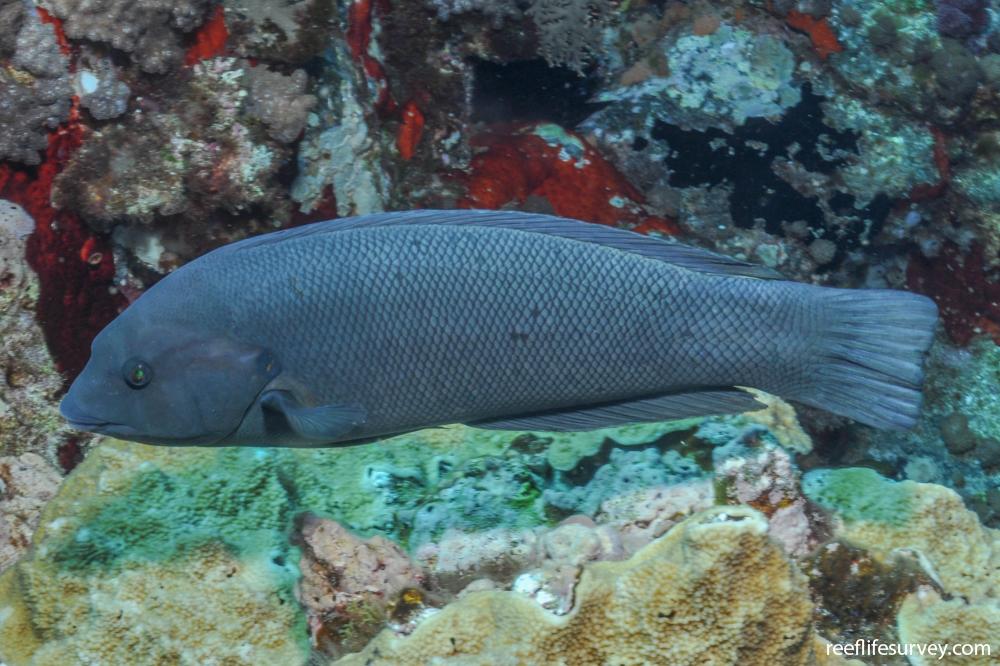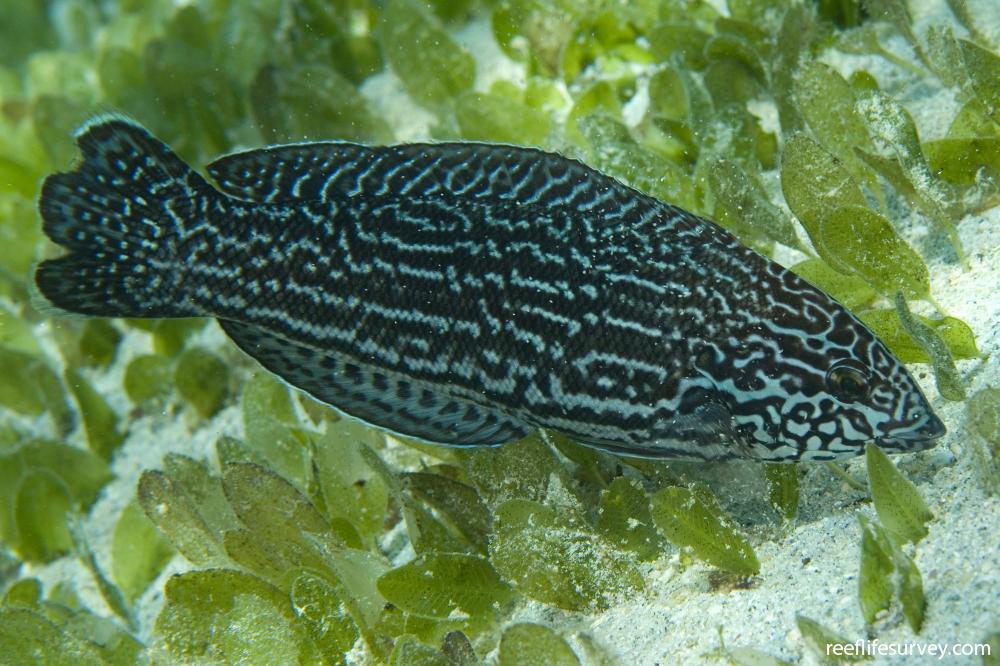Coris bulbifrons
Double-headerSimilar Species
Same Genus
Distribution
Localised, Temperate Australasia
Description
Large grey body, males develop large bulbous hump on head; larger juveniles with scribbled pattern on side and yellow patch on rear of operculum. Small juveniles black with pattern of white dots and stripes. Solitary, but common in reef lagoons.
Information
Max Size: 60 cm
Sea Temperature Range: 19.1-25.3°C
Depth: 1-20 m
Habitat Generalization Index: 19.81
Also referred to as the SGI (Species Generalisation Index), this describes the habitat niche breadth of the species. Species with values less than 15 are found in a relatively narrow range of reef habitat types (specialists), while those over 25 may be found on most hard substrates within their range (generalists). Learn more here.
Conservation and Rarity
IUCN Status: Vulnerable
Occurrence: Common (35.3% of sites)
Occurrence describes how often the species is found on surveys within its distribution. It is calculated as the % of reef sites surveyed by RLS divers across all the ecoregions in which the species has been observed
Abundance: Few (2 per transect)
Abundance is calculated as the average number of individuals recorded per RLS transect, where present.
Edit by: GJ Edgar. 2008. Australian Marine Life. New Holland, Sydney




























